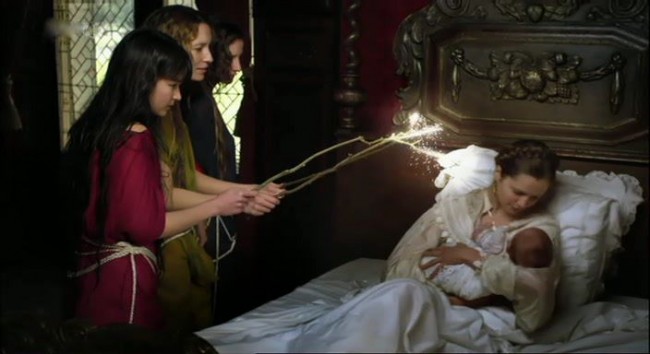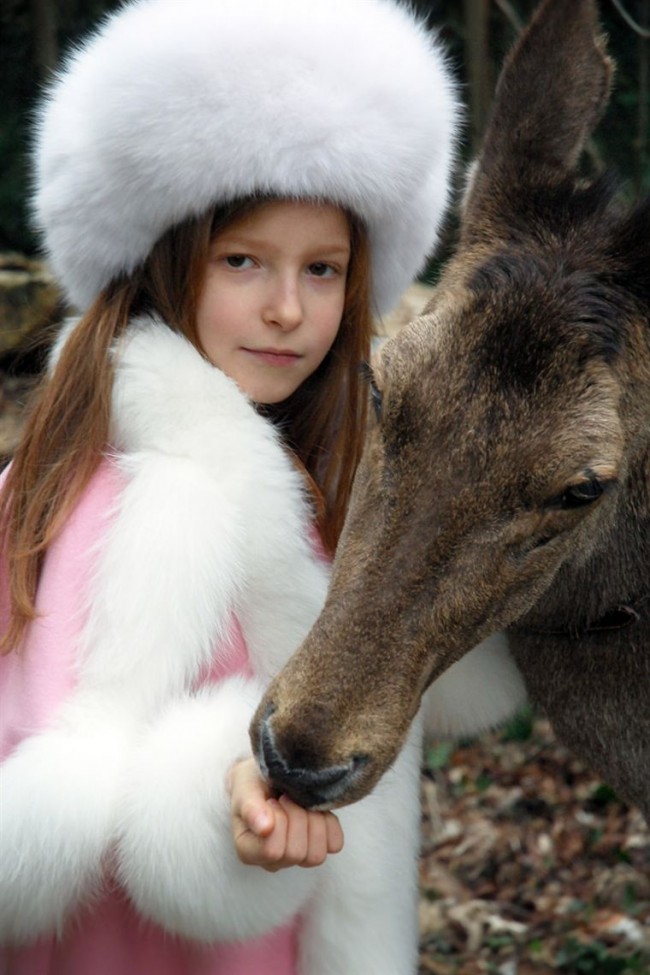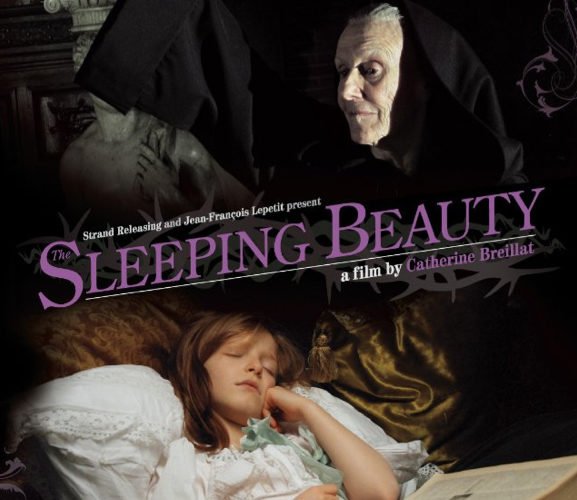
Last December I deemed Catherine Breillat’s postmodern Bluebeard one of my favorite films of the year. So I was eager to see what the quirky French director would bring to the tale of Sleeping Beauty – especially with so many others adapting the property as of late. Thankfully, she did not disappoint. Like Bluebeard, The Sleeping Beauty is imbued with an offbeat and surreal sense of style that makes it a curious joy to behold. For those unfamiliar, the closest comparison to Breillat’s visual style is Terry Gilliam, whose works is so weird and wonderful that it’s hard to care that the plot is flimsy or confusing. Yes, if you’re in search of plot, pick a different theater. But if you want something striking and inventive with an ever-present sense of danger, The Sleeping Beauty is for you.
 The drama begins with the birth of a beautiful little princess named Anastasia. Cradling her is an old crone in black who unleashes a curdled smile upon the fat pink baby. When a trio of nymphs in brightly colored, flimsy dresses appear, this appalling old woman reveals that she has already given her gift: the child will die by pricking her finger on a needle at 16. The three fretting fairies then use their powers to tack on addendums to this cruel curse: Anastasia will not die, but rather will sleep for 100 years. Her dreams will be full of adventure, and when she wakes she will be 16 – as childhood is overrated. Cut to six years later: Anastasia (played for most of the proceedings by the spirited Carla Besnaïnou) is a fiery (though sometimes obnoxious) young girl who despises dresses and dreams of being a night named Vladimir! She yearns for adventure and loathes that even though she is a princess everyone is always telling her what to do. (Feminist subtext: check.)
The drama begins with the birth of a beautiful little princess named Anastasia. Cradling her is an old crone in black who unleashes a curdled smile upon the fat pink baby. When a trio of nymphs in brightly colored, flimsy dresses appear, this appalling old woman reveals that she has already given her gift: the child will die by pricking her finger on a needle at 16. The three fretting fairies then use their powers to tack on addendums to this cruel curse: Anastasia will not die, but rather will sleep for 100 years. Her dreams will be full of adventure, and when she wakes she will be 16 – as childhood is overrated. Cut to six years later: Anastasia (played for most of the proceedings by the spirited Carla Besnaïnou) is a fiery (though sometimes obnoxious) young girl who despises dresses and dreams of being a night named Vladimir! She yearns for adventure and loathes that even though she is a princess everyone is always telling her what to do. (Feminist subtext: check.)
So, she pricks her finger and is promptly thrown into a world of boil-plagued brutes, gold-teethed gypsies, and pale princes. Amidst all this madness she finds a single mother with an adolescent son named Peter. They decide to take her in, and she is thrilled to be dressed in the boy’s hand-me-downs. Peter dotes on her, being the loving brother – until the Snow Queen turns his heart to ice and soon thereafter steals him away. Devastated this loss, Anastasia sets off to find her missing brother and first crush. Toward the end of her quest, she awakes now 16 (and played by the captivating Julia Artamonov) and discovers a handsome young man named Johan (David Chausse), a modern teen who while intrigued by this curious girl in the “vintage” dress has only one thing on his mind.
Yes, even here there are dangers.
Again, Breillat uses allegory to explore the theme of girlhood, and this time extends it into sexual discovery. Lamentably, the final act – which most capitalizes on the latter – feels a bit rushed, with Anastasia coming to a bittersweet maturity at breakneck speed. Perhaps after 100 years dreaming of various threats that a fearless and stern glare can usually deter, all it takes to manage real-life dangers is to wake up and stop being an idealistic girl? But as I’ve said, to get tripped up in the plot seems to miss the point. The Sleeping Beauty is a poetic and haunting coming-of-age tale full of playfully strange visual elements that tease the viewer and set off sparks in forgotten realms of the imagination. It’s an intoxicating trip.
The Sleeping Beauty opens in NY July 8th 2011.

